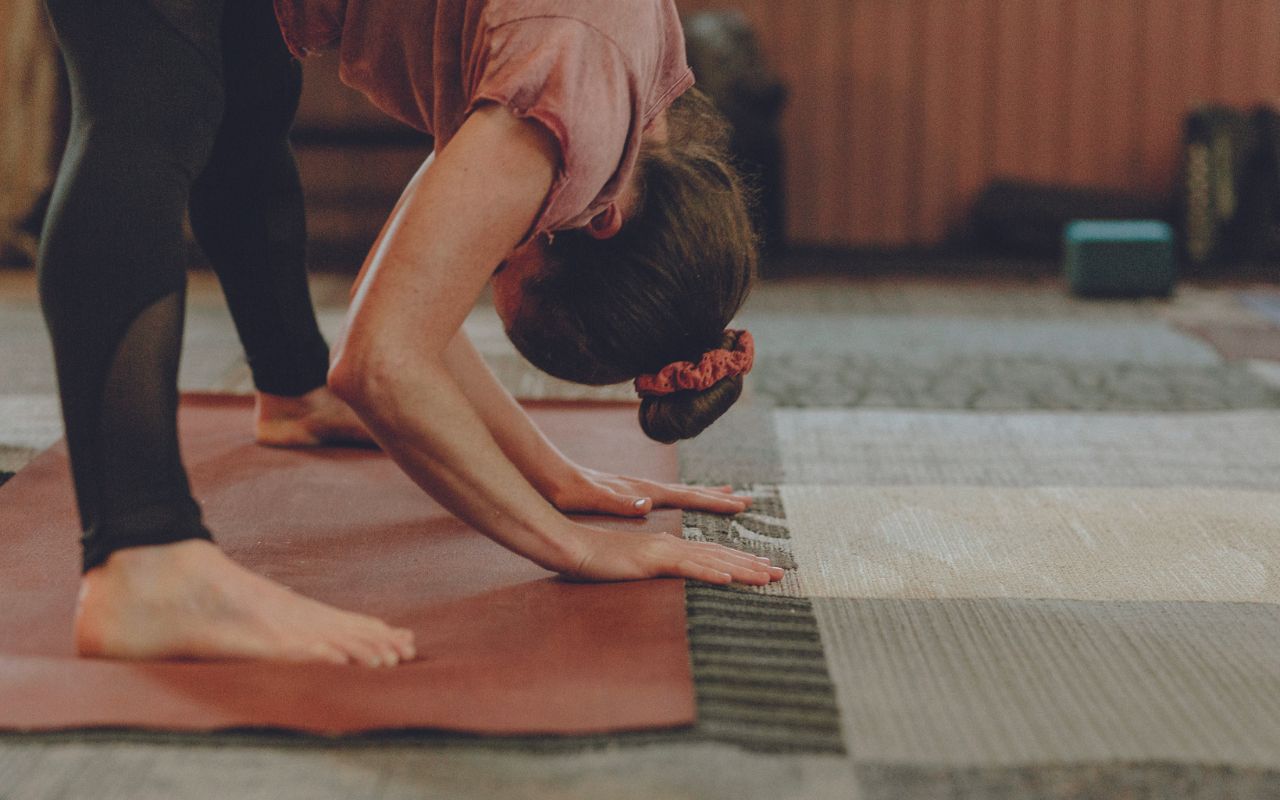
Four ways to practice the art of surrender
How yoga teachings can help us during our moments of surrender. By Angie Follensbee-Hall
When my daughter was three years old and nearly died, I experienced a brief moment of surrender.
I watched as her organs slowly shut down, her body as it paled and withered; I heard her screams of pain in protest. I didn’t know what to do anymore, it was all too overwhelming. I just said to whatever higher powers existed: If you need to take her now, please do. This pain is too much for any of us, especially her, to bear. I let go of all my mothering ego needs in that moment.
Luckily, she survived. Sometimes I do have guilt over that moment. Why didn’t I hold onto the mental fight?
I am not saying that had the outcome been different, I wouldn’t have had resentment, anger, depression, fear, and a host of other emotions or forms of resistance. And I am certainly grateful every moment of every day, that she pulled through. She is a beautiful gift in my life. In many ways that time made me appreciate my family, the present moment, and the many joys of life.
But that one moment of absolute surrender was very clear to me.
The last of the five Niyamas is the concept of Isvara Pranidhana. The word ‘Pranidhana’ means a complete letting go of the ego self; no expectations, no goals, no attachments. Very loosely translated, ‘Isvara’ means ‘higher self’, or god.
Alberto Villoldo translates sutra 1.23 as follows:
Surrender completely to Spirit
and attain Samadhi.
Spirit is the Supreme Self,
the primordial yogi, untouched by karma, free from desire, all knowing.
I have found that sometimes Isvara Pranidhana can be difficult for some western minds to understand. The two struggles I have seen are: Isvara — the concept of god as is described here, and the the negative connotations of surrender — Pranidhana.

Isvara: a closer look
The Yoga Sutras presuppose this concept of the divine. One doesn’t need to believe in a specific god to understand these concepts, but one should have a general belief that there is a higher purpose at work in the world. Yes, one can be an atheist and also practice yoga for its benefits of better understanding one’s self, for personal and community growth, and for maintaining health and wellness. However, the true origins of the practice arise from the belief in a divine force at work in our lives.
But yoga doesn’t prescribe what that divine force should be for you. The openness to all religions is one of the hallmarks of the yoga practice, and of yoga sutras. The great avatara Sri Anandamayima said: “Whether you worship Christ, Krishna, Kali or Allah, you
actually worship the one Light that is also in you, since It pervades all things.” This belief in a oneness of the divine force or higher Self is the fundamental basis of yoga in general and of this niyama. All human explanations of the divine are simply variations of this one unified source.
Essential to understanding this sutra is the belief that the divine means many different things to many different people, and interpretation of the divine is very personal. There is no intention to negate another person, or another culture’s, viewpoint, perspective, or description of the divine in these teachings. Basically, the Yoga Sutras leaves the divine to your own interpretation.
Pranidhana: supreme surrender
Surrender is sometimes understood to mean a personal weakness or to give up on something. In terms of battle, conflict, or competition, to surrender is to lose. But surrender in this context involves releasing your expectations about what should be. Surrender means recognising that you cannot control every outcome, no matter the effort you put into something.
To experience the fullness and the truth of freedom means to let go of your rigidity, your expectation, and your need to control. When you learn to stop fighting the events of your life, both physically and mentally, then you begin to step into Pranidhana, the supreme surrender.
The yoga sutras do not say “give up and don’t do anything.”
No, not at all.
Yoga is action. Yoga is discipline. Yoga is establishing your values, dedicating yourself to your work, and doing the best you can in any moment. What the yoga sutras are telling you to do is to let go of what you think is supposed to happen when you do that work, because you can only control your own actions, you cannot control the outcomes or the actions of others.

This is difficult for us goal-oriented doers! But having rigid expectations about the outcome of any action only brings in contraction, tightness, anger, and frustration when things don’t go our way (and they often don’t go our way!). The reminder here is that holding onto expectations will only cause suffering. This points back to the concept of Isvara, the divine. There is a higher self that understands the full workings of the universe better than we individual humans do.
Deborah Adele states in her book, The Yamas and Niyamas: “Surrender asks us to be strong enough to engage each moment with integrity while being soft enough to flow with the current of life.”
Sometimes we need to be pushed into a corner before we realise there is only surrender, like I was in the hospital with my daughter so many years ago. But if we are lucky, we can glean understanding from the wise teachings of the yoga sutras. If we study these teachings, meditate on them, and apply them in our lives, we can better prepare for all that life might offer us on this learning path.
Here are four more ways to practice Isvara Pranidhana: the Supreme Surrender:
- Spend time by yourself. This can look like a lot of different things, but try to do it without electronics.
- Talk or write to yourself. Journal what is on your mind without censorship.
- Be gentle with yourself. This is a practice, not a perfect!
- Practice gratitude directed toward yourself, and practice gratitude toward your life experiences. They offer rich learning opportunities at every corner.
When have you experienced moments of surrender? How have they offered you new insight into your lived experience?
Angie Follensbee-Hall is a yoga teacher, artist, and lifestyle coach with over 20 years teaching experience. To learn more, visit her website at: angiefollensbeehall.com
Photos: Sage Harple




